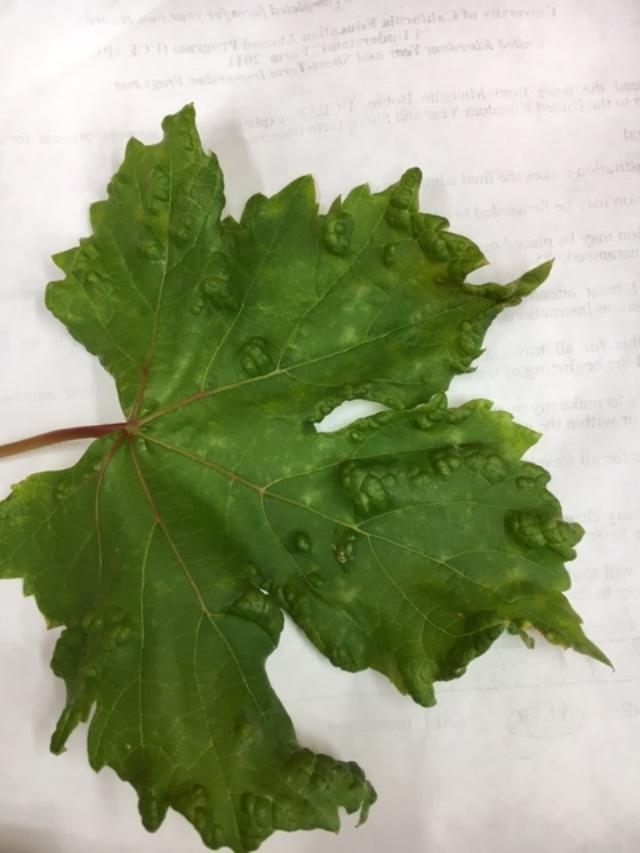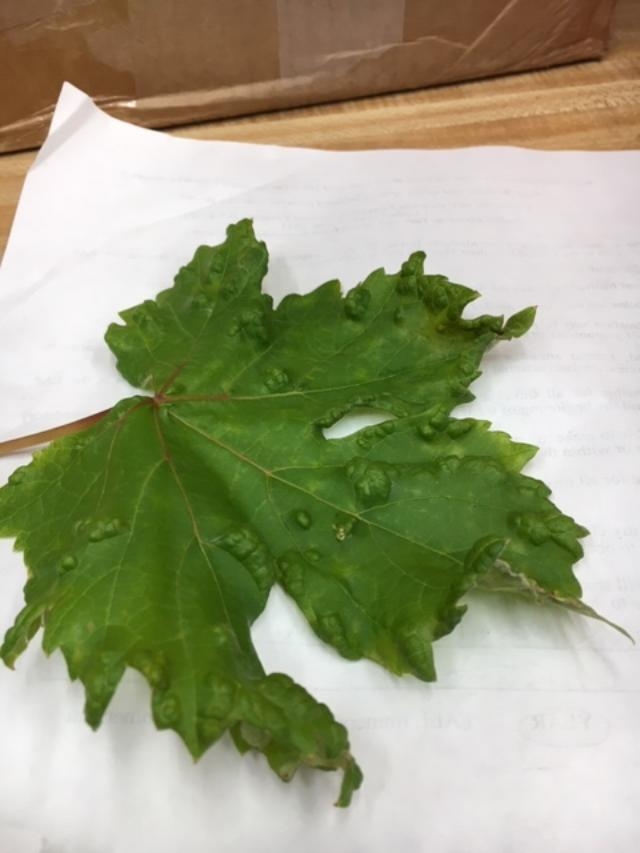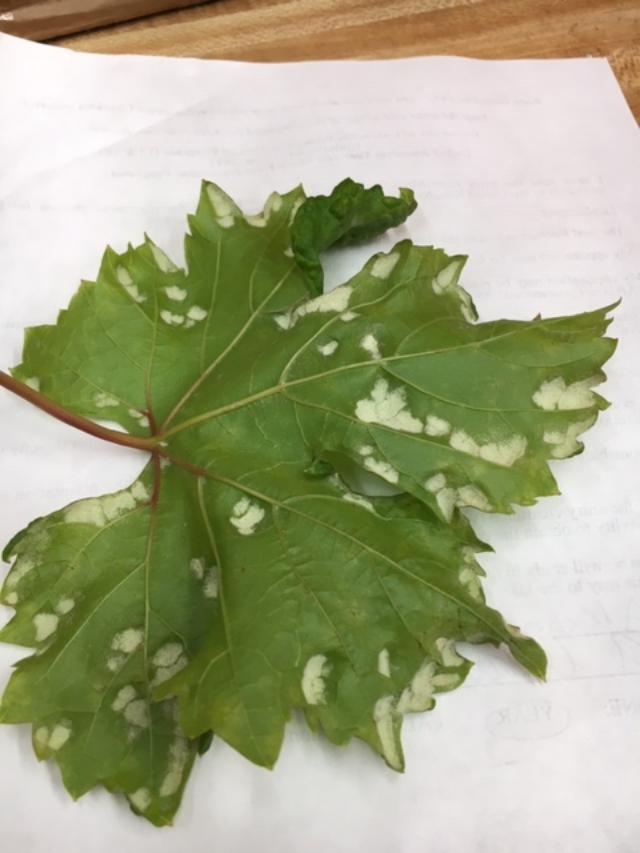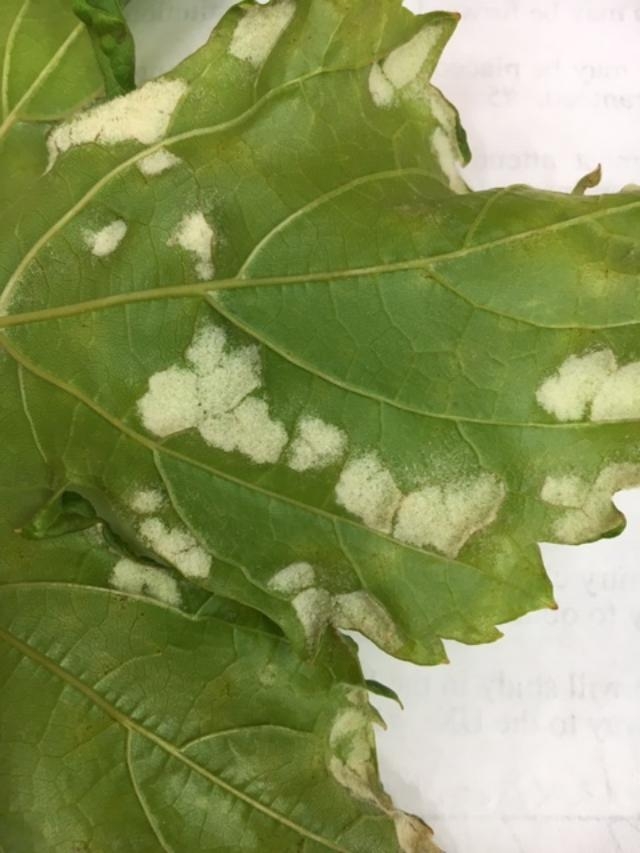Advice for the Home Gardener from the Help Desk of the
UC Master Gardener Program of Contra Costa County
Help Desk Request: I'm delighted you're available to help diagnose garden problems! Below are four pictures of a grape leaf problem. I have four old vines - Flame and Thompson seedless - that grow against a south-facing solid fence. The vines are close enough that they are co-mingled across the fence. The problem currently is located in one area of the vines and was not visually noticeable three weeks ago. All the vines are vigorous and seem healthy except for the affected leaves. I have cut most of the leaves and vines that are visibly distressed and placed them in my green waste bin. In the 15+ years I've had the grapes I have never had this problem; however, this year I was VERY, VERY late in pruning back the vines, and did not complete the pruning until the new vines had grown a couple feet long. Perhaps the evil villain over-wintered because of my tardy pruning?
Any idea what the problem is - fungus, bug or insect critter, bacteria? I have not seen anything crawling on either side of the leaves. And, what is your recommended approach and treatment? Thanks in advance for your help!
Submitted Representative Images of Affected Grape Leaves (below)




MGCC Help Desk Response: Thank you for contacting the UC Master Gardener Help Desk with your issue of ‘bumps and holes' on your grape leaves.
Thank you for the pictures and note that the blister is on the top of the leaf and the bottom shows fuzzy white. We were able to diagnose simply from the damage itself. The bumps are the result of mites – specifically grape erineum mites. The good news here is that even though the mites infest the leaves, no management is necessary as they rarely lead to any crop losses.
Erinium mites are wormlike, light yellowish white and microscope so you really would need magnification to see the actual mites themselves.
Young leaves show bright pinkish or reddish swellings on upper surfaces. Corresponding areas on lower surfaces are concave and densely lined with a felty mass of plant hairs
The mites overwinter under outer bud scales and move to unfolding leaves in spring. They associate in small groups to feed on lower leaf surfaces; the result is production of masses of enlarged leaf hairs inside a blisterlike area on the leaf. On the undersides of the leaves, beneath the swellings, are concave, densely lined, felty masses of oversized leaf hairs in which the mite populations develop. As the population increases, some move to new areas or to other leaves. From mid-August to leaf drop, there is a movement back to the overwintering site underneath the bud scales.
You indicated that this is new to you and that you were a bit late pruning. I cannot explain for sure why this year and not prior years and I cannot be sure the late pruning added to this situation.
Following is a link to a UC Pest Management website on the subject but it does not really add to the information I have provided above. http://ipm.ucanr.edu/PMG/GARDEN/FRUIT/PESTS/grerineummte.html
Good luck and enjoy those grapes, and do not hesitate to contact us again with garden problems.
Help Desk of the UC Master Gardener Program of Contra Costa County (EDC)
Note: UC Master Gardeners Program of Contra Costa's Help Desk is available almost year-round to answer your gardening questions. Except for a few holidays (e.g., last 2 weeks December), we're open every week, Monday through Thursday for walk-ins from 9:00 am to Noon at 2380 Bisso Lane, Concord, CA 94520. We can also be reached via telephone: (925) 608-6683, email: ccmg@ucanr.edu, or on the web at http://ccmg.ucanr.edu/Ask_Us/. MGCC Blogs can be found at http://ccmg.ucanr.edu/HortCoCo/ You can also subscribe to the Biog.